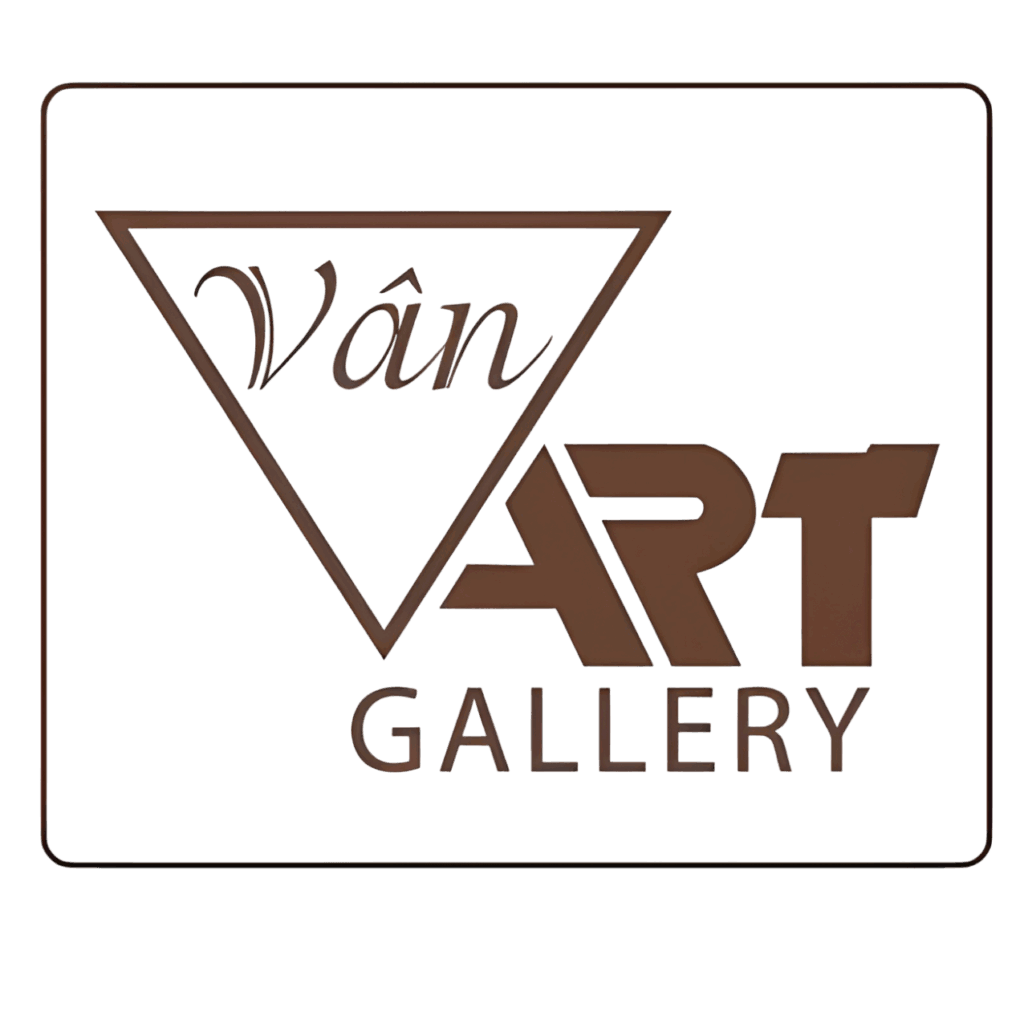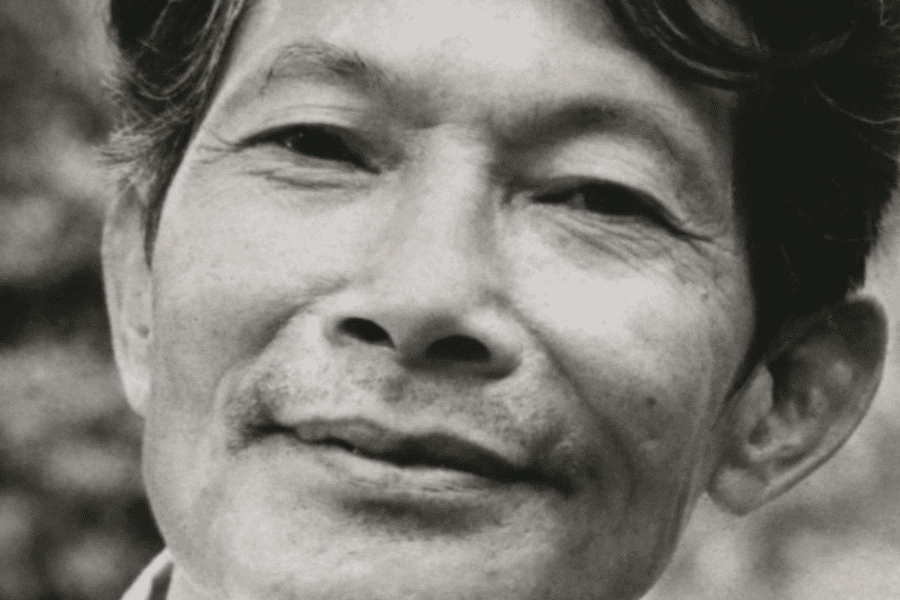Are you looking for a Vietnamese artist who not only creates vivid paintings but also deeply captures the national spirit through every brushstroke? Nguyen Sy Ngoc, a name synonymous with timeless lacquer artworks, is the answer. As one of the leading figures in modern Vietnamese art, he left behind a legacy of Vietnamese artworks that reflect the journey of resistance and heroic labor. This article will explore the biography of artist Nguyen Sy Ngoc, his challenging career path, unique style, and notable works—helping you gain a deeper understanding of the artist who has touched the hearts of many generations.
Biography of Artist Nguyen Sy Ngoc: From Childhood to Revolutionary Years
The biography of artist Nguyen Sy Ngoc is a story of immense talent forged through the fires of war and a passion for creation. Born on December 25, 1919, in Thanh Tri, Ha Noi—a region rich in cultural traditions—Nguyen Sy Ngoc grew up in a country seething under French colonial rule. From a young age, he displayed a passion for painting, with his first strokes inspired by the simple yet vibrant scenery of his homeland.
Education and Early Career
In 1939, Nguyen Sy Ngoc enrolled in the Indochina School of Fine Arts (now the Vietnam University of Fine Arts), in its XIII course—one of the final classes of this prestigious institution. There, he received formal training under the guidance of masters like Victor Tardieu, learning Western painting techniques combined with an Eastern spirit. The course, spanning from 1939 to 1944, equipped him with a solid foundation in lacquer painting, a medium that later became the hallmark “weapon” of his career.
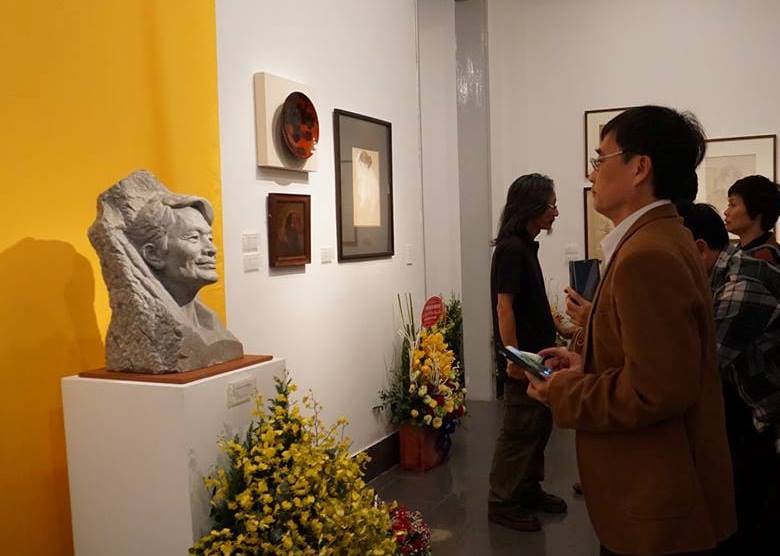
- Classmates: Nguyen Sy Ngoc studied alongside talented artists like Huynh Van Thuan and Tran Dinh Thao, forming a generation of revolutionary artists.
- Early Influences: His studies coincided with political upheavals, igniting in him a sense of artistic mission in service of the nation.
After graduating, Nguyen Sy Ngoc did not choose an easy path but plunged into the whirlwind of the revolution. He joined the National Conference for Culture immediately after the August Revolution of 1945, witnessing and capturing historic moments through his brush.
Role in the Resistance Against the French
The biography of artist Nguyen Sy Ngoc is deeply tied to the resistance against French colonialism. In 1945, he joined the Southward March of the National Guard, carrying his easel and a belief in independence. In the South, he was responsible for artistic work in the Resistance Drama Troupe, later moving to the Art Studio of Interzone IV, where he created propaganda paintings to inspire the spirit of soldiers and civilians.
From 1950 to 1954, Nguyen Sy Ngoc served as a lecturer at the Vietnam Fine Arts School in the Viet Bac war zone. Despite bombs and bullets, he persisted in teaching, igniting passion in the younger generation. These years not only honed his skills but also shaped his artistic philosophy: painting must be a weapon, closely connected to the people.
Through the biography of artist Nguyen Sy Ngoc, we see an artist who not only wielded a brush but also a gun, embodying an enduring patriotic spirit. He passed away on April 6, 1990, but his legacy lives on, honored with the Ho Chi Minh Prize for Literature and Arts in 2000.
Nguyen Sy Ngoc’s Artistic Journey: From Lecturer to Cultural Activist
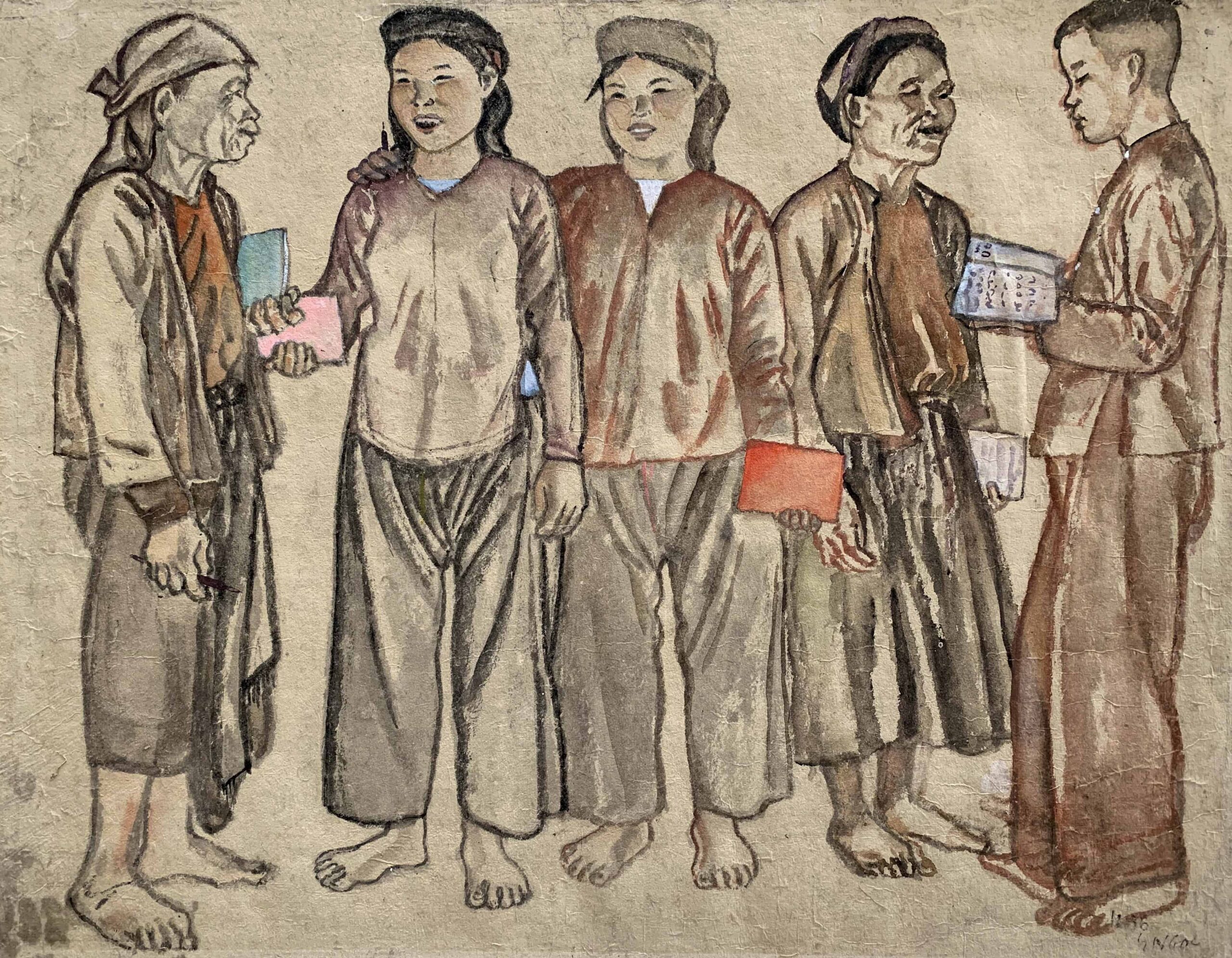
Nguyen Sy Ngoc’s artistic journey is a long path from the battlefield to the classroom, from creation to leadership in professional associations. After the liberation of the North, he returned to Ha Noi and continued to contribute to national art, becoming a symbol of perseverance and creativity.
Teaching and Creative Period in Ha Noi
In 1955, Nguyen Sy Ngoc was appointed as a lecturer at the Ha Noi University of Fine Arts, serving until 1965. With his experience from the war zones, he not only taught techniques but also instilled a revolutionary spirit through art. His students later became leading artists, such as Nguyen Tu Nghiem and Duong Pho.
- Educational Contributions: He emphasized combining socialist realism with national identity, helping students understand that painting must reflect the life of labor.
- Personal Challenges: In the 1950s, Nguyen Sy Ngoc faced difficulties due to disagreements with certain cultural policies, but he remained steadfast in pursuing creative freedom.
From 1965 to 1973, he transitioned to a role as a creative artist at the Vietnam Fine Arts Association, later collaborating with Van Nghe newspaper. During this time, Nguyen Sy Ngoc’s artistic journey expanded into illustration and art criticism, with incisive writings on modern trends.
Contributions to the Vietnam Fine Arts Association
Nguyen Sy Ngoc was a member of the painting division from 1957 and served as a member of the Executive Committee of the Vietnam Fine Arts Association from its first term until 1983. Notably, from 1957-1958, he held the position of Deputy General Secretary, contributing to building the foundation for this organization.
- Policy Development: He promoted the preservation of traditional art heritage while encouraging modern creation.
- Organizing Exhibitions: With his support, many post-war exhibitions were held, introducing young talents.
- Lasting Impact: His efforts helped the Fine Arts Association become a pillar of the industry, and he was highly regarded for his leadership skills.
Through Nguyen Sy Ngoc’s artistic journey, we learn a lesson about quiet sacrifice: an artist not only paints but also builds a strong artistic community.
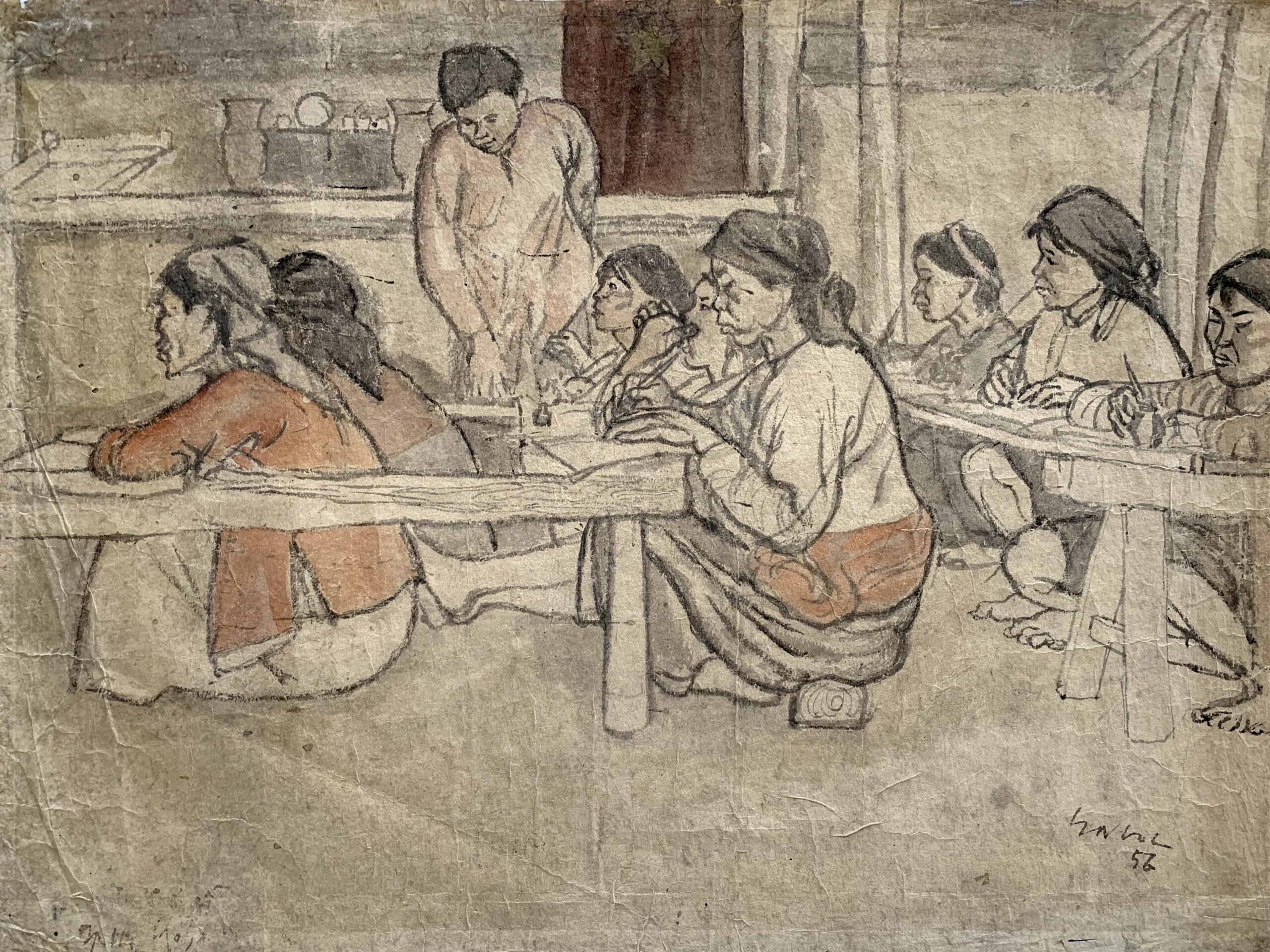
Nguyen Sy Ngoc’s Artistic Style: A Perfect Blend of Realism and Expressionism
Nguyen Sy Ngoc’s artistic style is a testament to his versatile talent, harmoniously blending authentic realism with intense emotional expression. Born from the years of resistance, this style is not only beautiful but also carries profound historical value, particularly through Nguyen Sy Ngoc’s lacquer paintings.
Realism in Lacquer Paintings
Nguyen Sy Ngoc’s artistic style stands out with its realism, vividly depicting the lives of laborers and fighters. He used lacquer—a traditional Vietnamese medium—to portray images of Uncle Ho’s soldiers, the bond between the military and civilians, and workers in the Quang Ninh coal mines.
- Authentic Representation: Each brushstroke is based on real-life observations, from the curves of a soldier’s muscles to the dust and smoke of the coal mines, creating a relatable and accessible feel.
- Social Value: His works are not only artistic but also historical documents, honoring the collective strength of the people.
During the 1960s and 1970s, Nguyen Sy Ngoc collaborated with Van Nghe newspaper, creating sharp, realistic illustrations that critiqued and celebrated contemporary society.
Expressive Tendencies Full of Emotion
Alongside realism, Nguyen Sy Ngoc’s artistic style also embraces expressionism, conveying the intense emotions of youth. He used contrasting colors—vivid red of wartime fires, mysterious black of coal mines—to express a yearning for freedom.
- Bold Lines: His brushwork is simple yet sincere, avoiding complexity to focus on inner emotions.
- Personal Influence: His experiences in the Viet Bac war zone nurtured a revolutionary spirit, transforming each painting into a call to action.
This combination makes Nguyen Sy Ngoc’s lacquer paintings not only beautiful but also deeply moving, touching the souls of viewers.
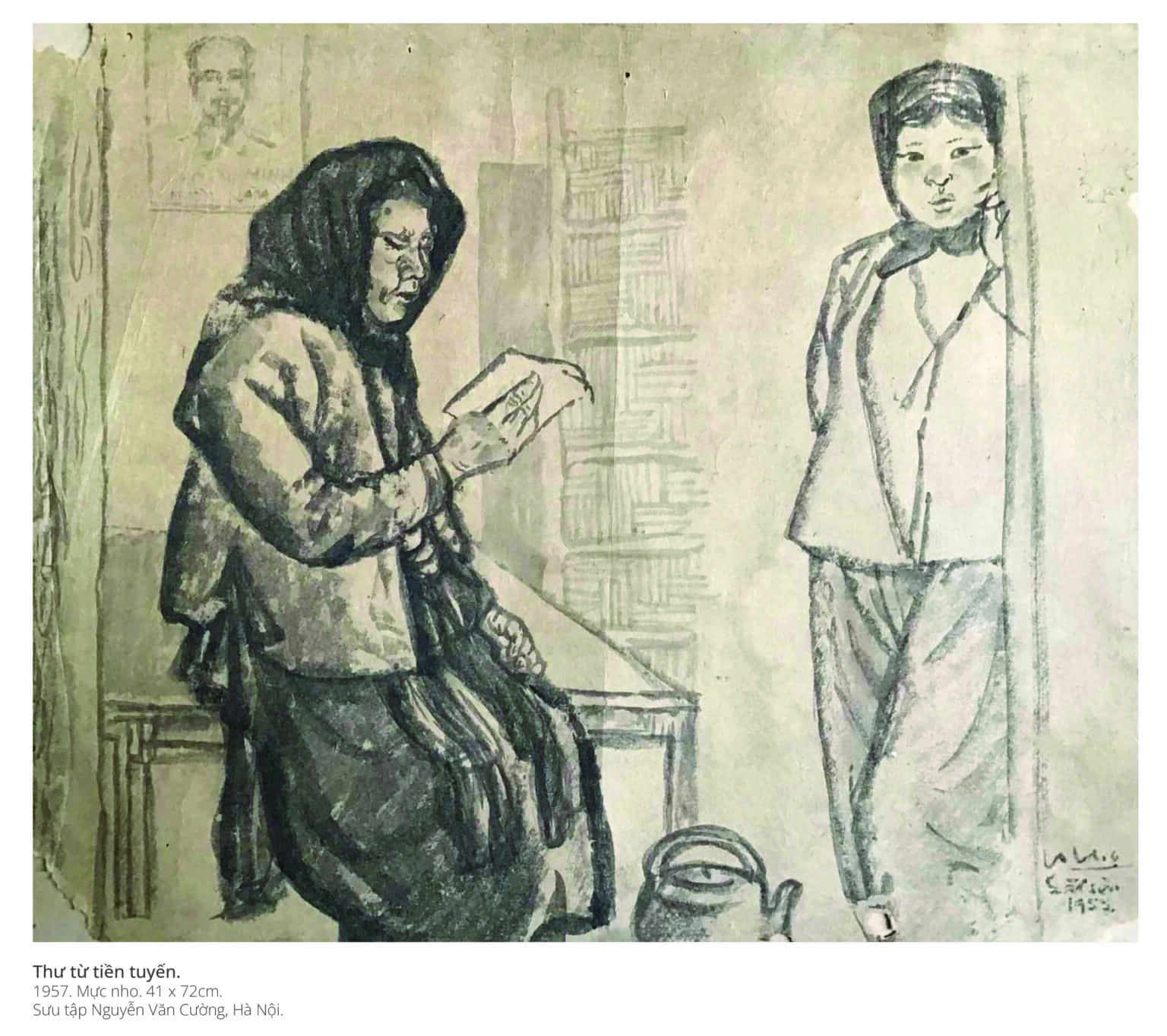
Works During the Resistance Against the French and in the Coal Region
During the resistance against French colonialism, Nguyen Sy Ngoc’s artistic style was tested and shone through works capturing heroic images. In Quang Ninh, he depicted the lives of workers with a celebration of labor, creating paintings that were both poetic and realistic.
- Transformation: From the 1940s, he ventured into new art forms, moving away from classical painting to pursue modernity.
- Creative Breakthrough: The nationwide resistance ignited in him a refined sensitivity, shaping his distinctive style.
Nguyen Sy Ngoc’s artistic style is truly the pinnacle of socialist realist painting, deeply understanding the soul of the Vietnamese people.
Notable Works of Nguyen Sy Ngoc: Timeless Lacquer Masterpieces
Nguyen Sy Ngoc’s notable works are treasures of Vietnamese art, preserved at the National Fine Arts Museum. They not only showcase his talent but also narrate the nation’s history through an artistic lens.
“Military-Civilian Bond” – A Symbol of Unity
Created in 1949 at the Quan Tin Art Studio (Thanh Hoa), Nguyen Sy Ngoc’s “Military-Civilian Bond” (60x80cm, lacquer) portrays a moment of civilians supporting soldiers. With realistic brushstrokes, he captures their unbreakable bond, using glossy lacquer layers to emphasize vitality.
- Historical Significance: The work promoted the spirit of resistance and was widely exhibited.
- Notable Technique: Multi-layered lacquer creates depth, making the images of soldiers and villagers come alive.
“Deo Nai” and Images of the Battlefield
Nguyen Sy Ngoc’s “Deo Nai” is one of his notable works from the Southward March period. This lacquer painting depicts rugged terrain and the determination of soldiers and civilians, with bold lines expressing resilience.
- Intense Emotion: The green of forested mountains contrasts with the red of gunfire, igniting patriotic fervor.
- Artistic Value: Highly praised for its composition, allowing viewers to feel the pulse of history.
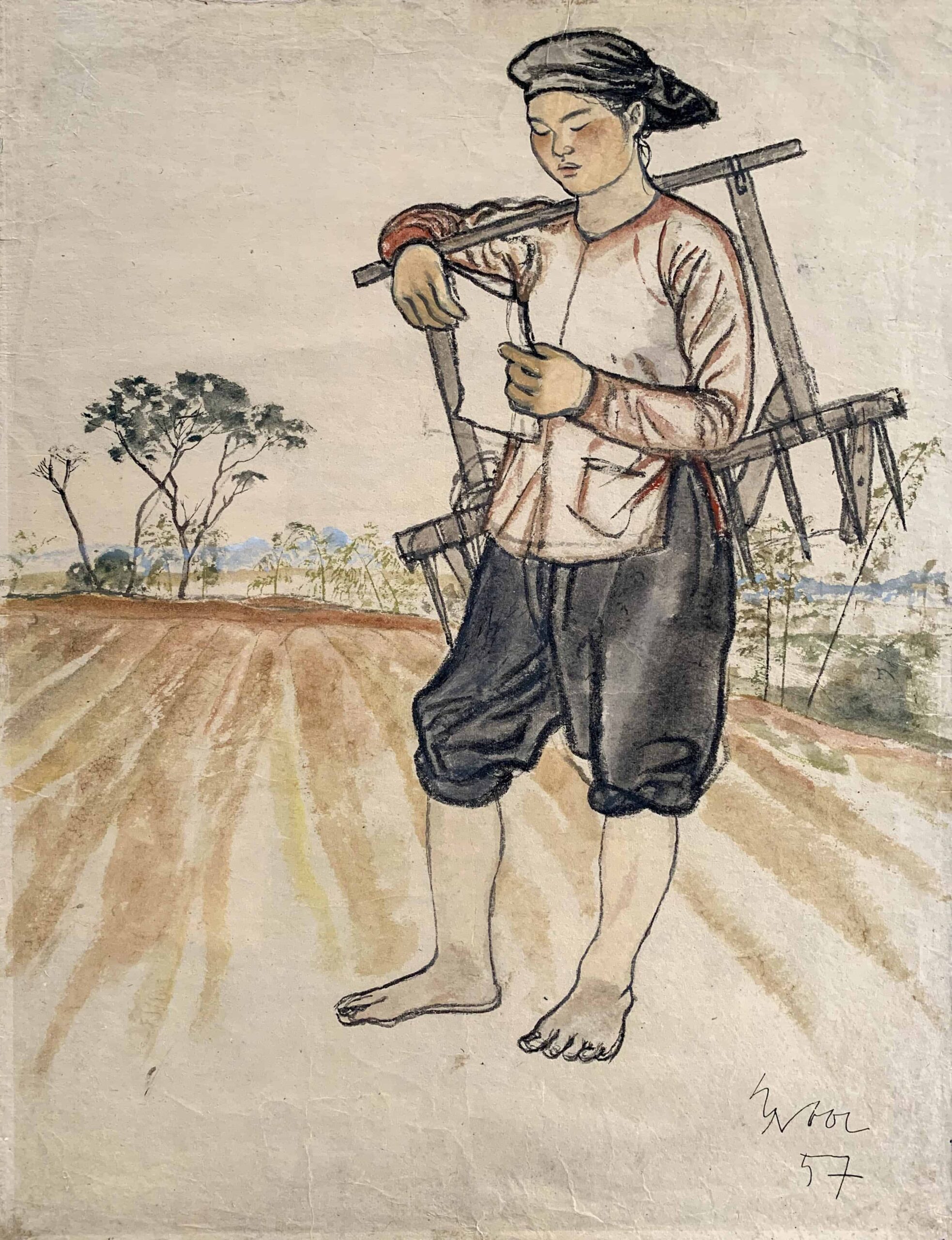
“The Bowl” and “We Have Jets, My Friend” – Works Full of Philosophy
Nguyễn Sỹ Ngọc’s “The Bowl” (lacquer painting) symbolizes the simplicity of a soldier’s life, with the image of a rice bowl filled with camaraderie. Similarly, Nguyễn Sỹ Ngọc’s “We Have Jets, My Friend” celebrates the power of the air force, depicting planes soaring across the sky.
- “The Bowl”: Reflects a sincere philosophy of life, close to the everyday experiences of the resistance era.
- “We Have Jets, My Friend”: Combines realism and expressionism, honoring the victory at Điện Biên Phủ.
- Shared legacy: Nguyễn Sỹ Ngọc’s iconic works are not only displayed but also inspire future generations, with over 100 paintings preserved.
Through these masterpieces, Nguyễn Sỹ Ngọc proves that art can bridge the past and the present.
The Legacy of Artist Nguyễn Sỹ Ngọc: A Lasting Influence
Nguyễn Sỹ Ngọc was not only an artist but also a teacher and cultural activist – a “soldier” on the artistic front. His legacy lies in advancing the development of Vietnamese fine arts, with Nguyễn Sỹ Ngọc’s artistic style inspiring multiple generations. In 2018, on the centennial of his birth, exhibitions about him attracted thousands, affirming his enduring stature.
Today, when exploring Nguyễn Sỹ Ngọc’s biography or admiring his iconic works, we not only see beauty but also feel the spirit of nationalism. If you are an art lover, visit the Fine Arts Museum to experience the legendary brushstrokes firsthand. Nguyễn Sỹ Ngọc – forever a source of pride for Vietnamese fine arts!
